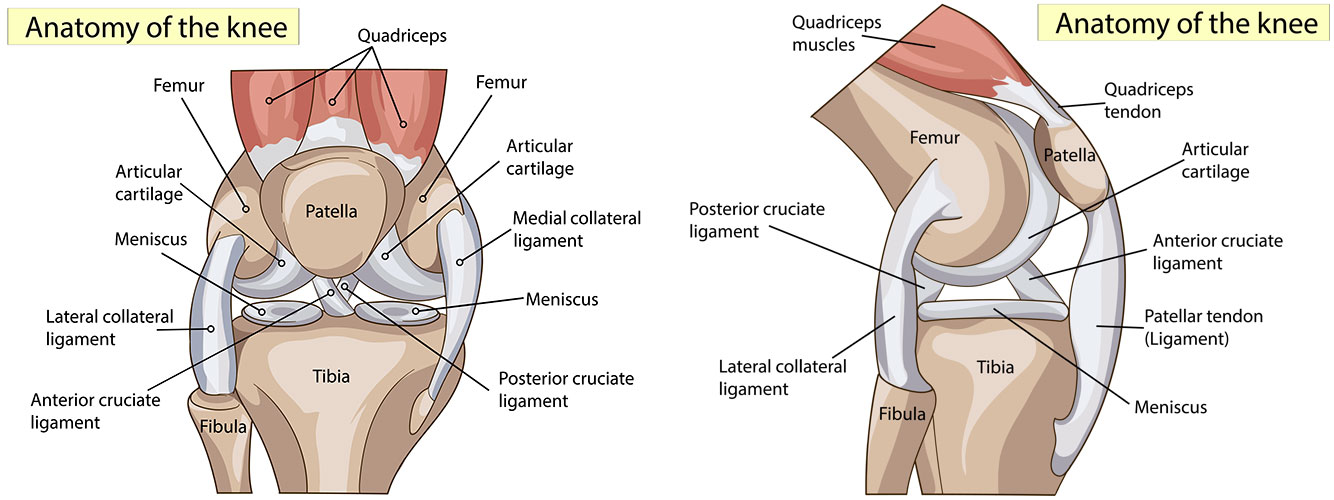What is the Anterior Cruciate Ligament (ACL)?
The anterior cruciate ligament (ACL) is the primary stabilizer to the knee. It offers stability to the knee during running and cutting activities. In the United States there are about 95,000 injuries per year. Most injuries occur during running, cutting, and twisting sports or activities such as soccer and basketball. The injured patient often feels a “pop” and experiences immediate swelling and inability to ambulate. Once the pain has subsided, most patients experience significant symptoms of instability with sports as well as day-to-day activities. The diagnosis is made typically by clinical examination by an orthopedic surgeon and confirmed with a MRI.

What are my options if my ACL is torn?
Some patients who tear their ACL will elect to treat it non-operatively. They will be treated with aggressive physical therapy to strengthen the muscles around the knee. They will also be fitted for an ACL brace. They are encouraged to participate in non-impact activities, straight-line running, and avoid cutting and twisting sports. Other patients elect to have the ACL reconstructed surgically. These patients are typically younger athletes or those who participant in sports that require cutting and twisting motions.
How can the ACL be fixed?
When the ACL is torn we know it won’t heal itself. We also know that the ACL cannot be sewn back together. We do know that the current reconstruction techniques have a very high success rate. An ACL reconstruction involves placing a new graft in the place of the old ACL. The most common sources of grafts are the patellar tendon graft, the hamstring graft, and an allograft (from a cadaver). These all have high success rate. I prefer a patellar tendon graft. I harvest the graft from the same knee and through an arthroscope insert it into the place of the old ACL. The surgery typically takes one hour.
If I have my ACL fixed, what can I except afterwards?
After an ACL reconstruction the patient goes home the same day. The patient will start physical therapy immediately using a continuous passive motion machine to slowly flex the knee. The patient is able to bear weight immediately while wearing a knee brace. The knee brace is discontinued once the patient returns good strength of the knee which is typically 7 to 10 days. The patient will start to ride a stationary bicycle once the knee is able to easily bend to 90 degrees (typically two weeks). The patient is allowed to swim at approximately two months. A brace is applied at three months and the patient is allowed to run straight ahead only. At four and a half months the patients works with a trainer to being light cutting and twisting movements. A full release is given at approximately six months. We have had good success with this technique and anticipate the injured athlete will be able to resume full activities between six and twelve months.